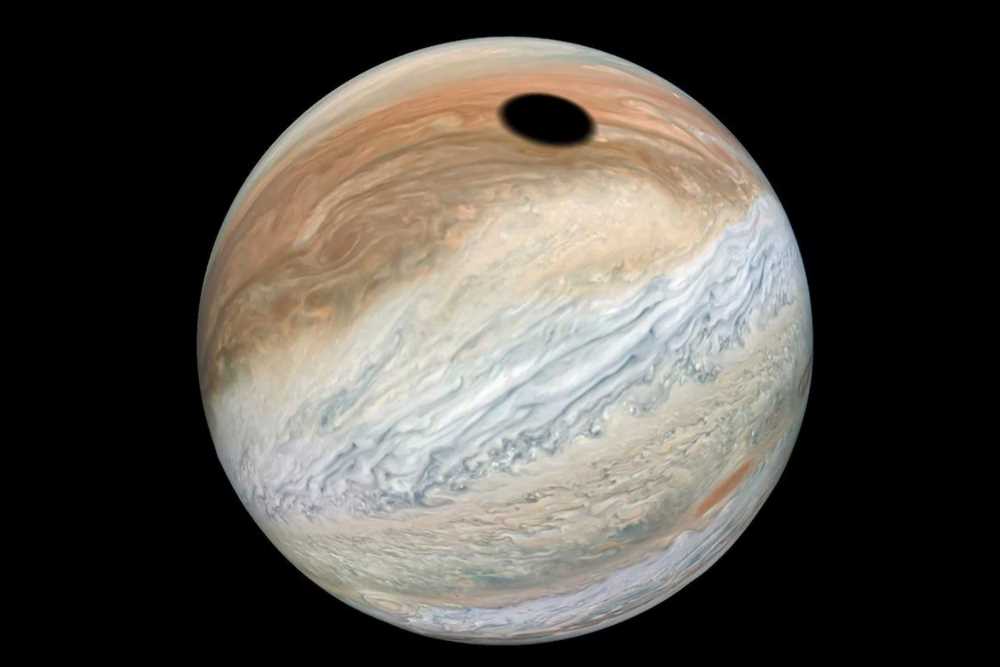NASA has captured stunning images of Jupiter pictured with an Earth-sized black spot on its surface.
It’s actually an enormous shadow from an eclipse caused by Jupiter’s moon Io passing in front of the sun.
The images were taken by NASA’s Juno probe, which has been circling Jupiter since 2016.
Juno caught the eclipse on September 12 during a fly-by of Jupiter.
It was caused by Io, a fiery moon believed to be the most volcanically active object in the solar system.
Io is one of Jupiter’s 79 moons, but it orbits closer than the others.
More than 400 active volcanoes have been discovered on Io, spewing lava and gas up to 300 miles into the air.
There are more than 100 mountains scattered across Io, some of which are taller than Mount Everest.
It’s also the fourth-largest moon in the Solar System, the most dense and was discovered in 1610 by Galileo Galilei.
In NASA’s new images, Io’s shadow appears to be of similar size to the Great Red Spot – a raging Jupiter storm slightly bigger than Earth.
“Io is so big and close that it more than blocks the sun (it appears 4x as big as the sun from Jupiter’s perspective),” said Katie Mack, an astrophysicist explaining the eclipse effect.
“And it’s so close that the penumbra (fuzzy outer edge of shadow) is super thin.”
More than 400 active volcanoes have been discovered on Io, spewing lava and gas up to 300 miles into the air.
There are more than 100 mountains scattered across Io, some of which are taller than Mount Everest.
It’s also the fourth-largest moon in the Solar System, the most dense and was discovered in 1610 by Galileo Galilei.
In NASA’s new images, Io’s shadow appears to be of similar size to the Great Red Spot – a raging Jupiter storm slightly bigger than Earth.
“Io is so big and close that it more than blocks the sun (it appears 4x as big as the sun from Jupiter’s perspective),” said Katie Mack, an astrophysicist explaining the eclipse effect.
“And it’s so close that the penumbra (fuzzy outer edge of shadow) is super thin.”
NASA’s Juno space probe was built by Lockheed Martin and launched from Florida on August 5, 2011.
It entered a polar orbit of Jupiter on July 5, 2016 to begin probing the planet.
Its mission involves measuring Jupiter’s composition, gravity and magnetic feed – and is hunting for clues about how the planet formed.
Juno is powered by solar arrays and has imaging equipment used to send spectacular photos back to Earth.
Source: Read Full Article

